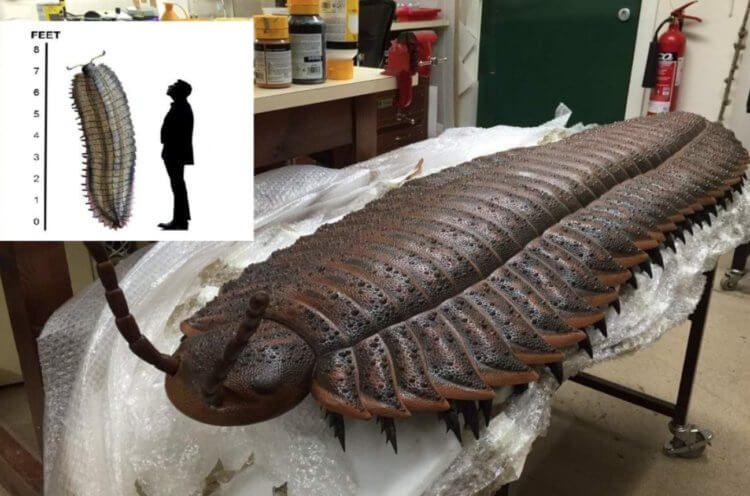More than 300 million years ago, before the advent of dinosaurs, the main inhabitants of the Earth were giant dinosaurs. The dragonflies were the size of pigeons, and the centipedes were as long as a car. They grew to gigantic sizes for a variety of reasons. Firstly, their body sizes were influenced by unique environmental conditions, completely different from those of today. Secondly, in those days there were no reptiles on the planet, so insects felt completely safe. In addition to giant insects, the huge ancestors of modern sharks and giant amphibious creatures also lived at that time. The period of the Earth, in which living creatures had gigantic sizes, is called the Carboniferous period. Why did animals grow to sizes unimaginable today at this time?

In the Carboniferous period of our planet, giant insects lived. Source: gazeta.ru
Carboniferous period on Earth
The Carboniferous Period, which began 359 million years ago and ended about 299 million years ago, is considered one of the most interesting periods in Earth's history. At this time, huge parts of the land began to shift and form the supercontinent Pangea. The climate in those days was warm and humid, and the planet was dominated by dense forests.

The fauna of the Carboniferous period looked something like this. Source: paleohunters.ru
Giant insects on Earth
The fauna of the Carboniferous period was mainly represented by huge insects. For example, the Meganeura, striking in their size, flew through the air. Outwardly, they looked like modern dragonflies, but their wingspan was 75 centimeters. What is most frightening is that these creatures were carnivores – they hunted other insects, and sometimes even amphibians.

Meganeura in comparison with humans. Source: autoparus.by
While giant dragonflies flew in the sky, Arthropleura crawled along the land. These creatures, similar to modern centipedes, grew up to 2.5 meters and fed on decaying plants. Fossilized prints of the bodies of these creatures are found in large quantities in the territories of Poland, Germany, Belgium and a number of other countries.

Approximate appearance and size of Arthropleura. Source: geologyin.com
In addition to insects, even larger creatures could be found during the Carboniferous period. For example, at that time there lived giant scorpions of the genus Pulmonoscorpius. They lived in swampy areas and grew up to 70 centimeters in length. There was also an abundance of giant cockroaches on Earth, about 10 centimeters long.

The ancient scorpion Pulmonoscorpius. Source: travelask.ru
Article on the topic:326 million years ago, car-sized centipedes lived on Earth
Why ancient animals were huge
There were a lot of huge animals in the Carboniferous period, this is understandable. But for what reason did they grow so much? There are several reasons for this.
First of all, animal gigantism was associated with increased oxygen levels in the atmosphere. Today the oxygen concentration in the air is 21%, but in those days this figure reached 35%. Insects breathed and breathe not with the help of lungs, but through a network of tiny tubes called tracheae. More efficient breathing contributed to better metabolism, which is why insects grew to sizes unimaginable today.

The nature of the Carboniferous period. Source: study.com
There is also a version that huge amounts of oxygen harmed animals. Even today, if a person breathes oxygen-rich air for a long time, he will become ill and the long-term consequences will be extremely dire. Scientists believe that thanks to their large bodies, insects significantly reduced the destructive effects of oxygen.
The absence of natural enemies contributed to the rapid development of insects. Of course, there were animals that could eat them. But there were no birds and mammals in those days, and insects felt extremely calm and themselves posed a danger to other living creatures. In addition, they were large in size – who would risk an attack?

Even people would prefer to stay away from huge insects. Author: Lucas Lima/Earth Archives
Over time, the giant insects disappeared because the Permian period began on Earth. The climate has changed significantly, as has the appearance of our planet. Oxygen in the air has become significantly less, mammals and other creatures have appeared that simply would not give huge insects the opportunity to survive.
Want to learn more about the world around us?Subscribe to our Zen- channel!
But the insects themselves have not disappeared. Moreover, today it is the most diverse and numerous class of animals. Unfortunately, due to climate change and human activities, some insect species are disappearing. If you are interested in this topic, read our material “The rarest insects in the world – there are about 30 of them left in the wild.”